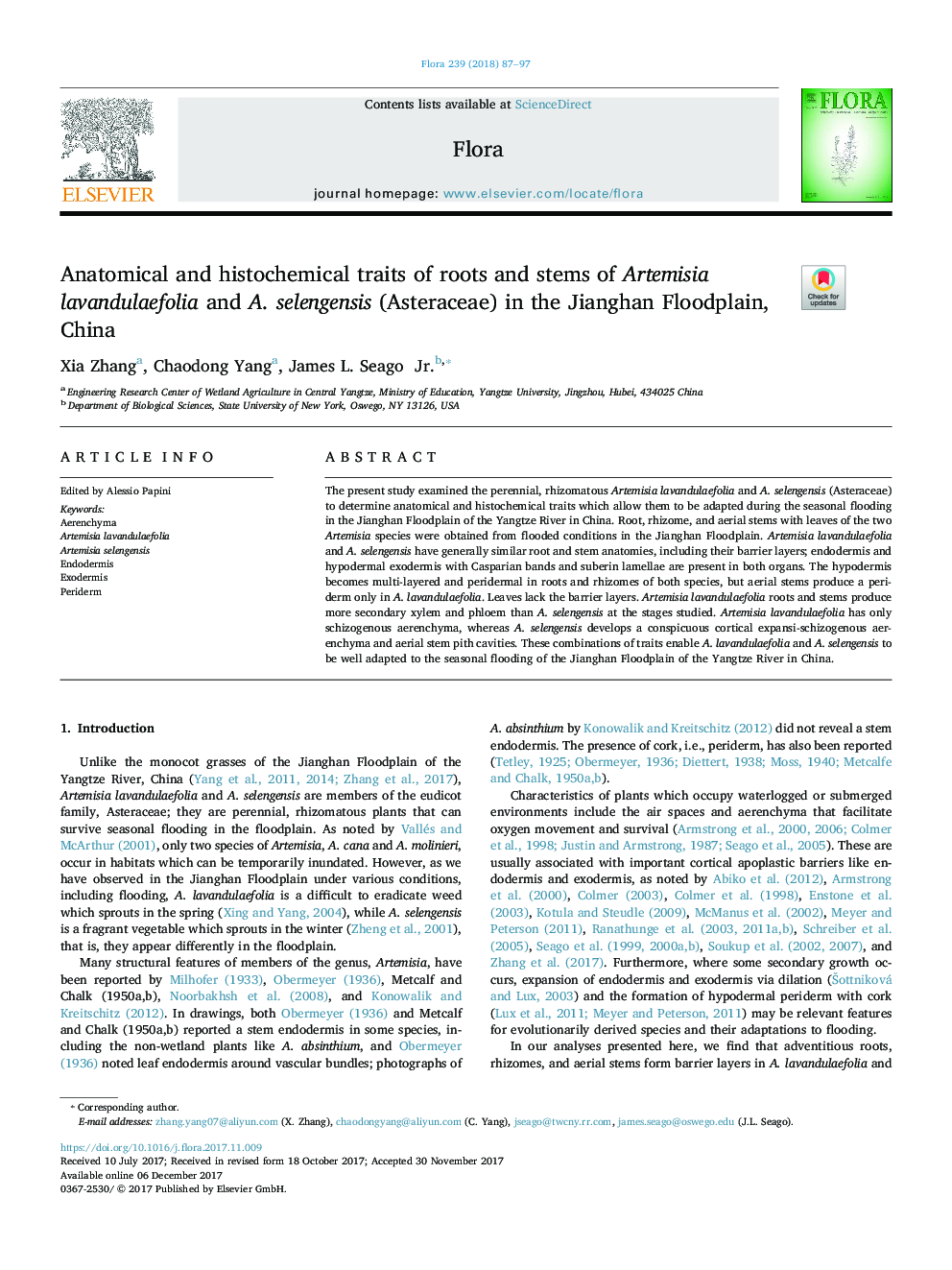| Article ID | Journal | Published Year | Pages | File Type |
|---|---|---|---|---|
| 8470204 | Flora - Morphology, Distribution, Functional Ecology of Plants | 2018 | 11 Pages |
Abstract
The present study examined the perennial, rhizomatous Artemisia lavandulaefolia and A. selengensis (Asteraceae) to determine anatomical and histochemical traits which allow them to be adapted during the seasonal flooding in the Jianghan Floodplain of the Yangtze River in China. Root, rhizome, and aerial stems with leaves of the two Artemisia species were obtained from flooded conditions in the Jianghan Floodplain. Artemisia lavandulaefolia and A. selengensis have generally similar root and stem anatomies, including their barrier layers; endodermis and hypodermal exodermis with Casparian bands and suberin lamellae are present in both organs. The hypodermis becomes multi-layered and peridermal in roots and rhizomes of both species, but aerial stems produce a periderm only in A. lavandulaefolia. Leaves lack the barrier layers. Artemisia lavandulaefolia roots and stems produce more secondary xylem and phloem than A. selengensis at the stages studied. Artemisia lavandulaefolia has only schizogenous aerenchyma, whereas A. selengensis develops a conspicuous cortical expansi-schizogenous aerenchyma and aerial stem pith cavities. These combinations of traits enable A. lavandulaefolia and A. selengensis to be well adapted to the seasonal flooding of the Jianghan Floodplain of the Yangtze River in China.
Related Topics
Life Sciences
Agricultural and Biological Sciences
Ecology, Evolution, Behavior and Systematics
Authors
Xia Zhang, Chaodong Yang, James L. Jr.,
